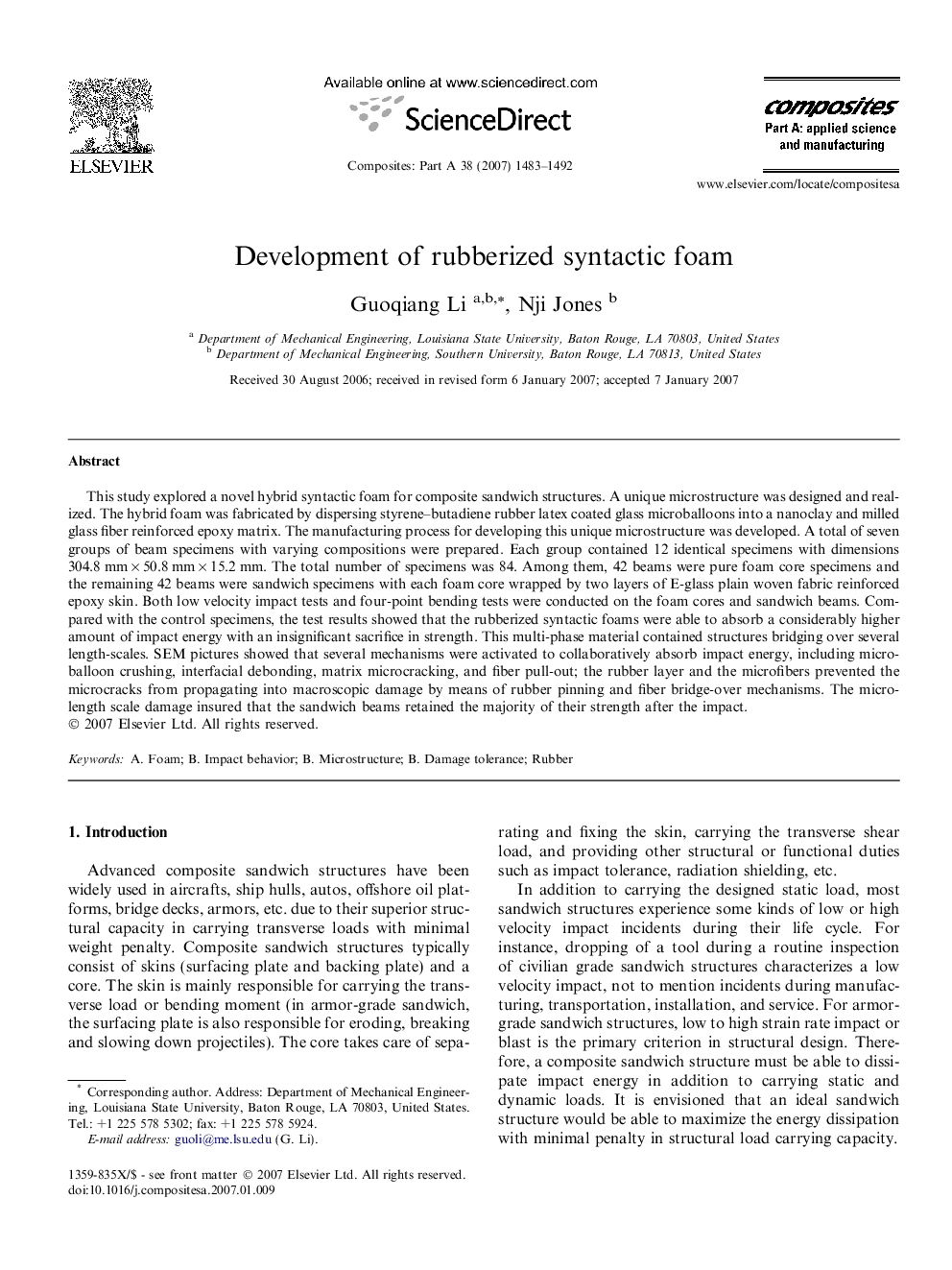| Article ID | Journal | Published Year | Pages | File Type |
|---|---|---|---|---|
| 1467654 | Composites Part A: Applied Science and Manufacturing | 2007 | 10 Pages |
This study explored a novel hybrid syntactic foam for composite sandwich structures. A unique microstructure was designed and realized. The hybrid foam was fabricated by dispersing styrene–butadiene rubber latex coated glass microballoons into a nanoclay and milled glass fiber reinforced epoxy matrix. The manufacturing process for developing this unique microstructure was developed. A total of seven groups of beam specimens with varying compositions were prepared. Each group contained 12 identical specimens with dimensions 304.8 mm × 50.8 mm × 15.2 mm. The total number of specimens was 84. Among them, 42 beams were pure foam core specimens and the remaining 42 beams were sandwich specimens with each foam core wrapped by two layers of E-glass plain woven fabric reinforced epoxy skin. Both low velocity impact tests and four-point bending tests were conducted on the foam cores and sandwich beams. Compared with the control specimens, the test results showed that the rubberized syntactic foams were able to absorb a considerably higher amount of impact energy with an insignificant sacrifice in strength. This multi-phase material contained structures bridging over several length-scales. SEM pictures showed that several mechanisms were activated to collaboratively absorb impact energy, including microballoon crushing, interfacial debonding, matrix microcracking, and fiber pull-out; the rubber layer and the microfibers prevented the microcracks from propagating into macroscopic damage by means of rubber pinning and fiber bridge-over mechanisms. The micro-length scale damage insured that the sandwich beams retained the majority of their strength after the impact.
